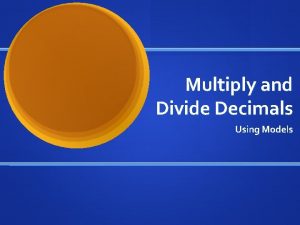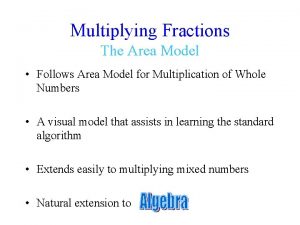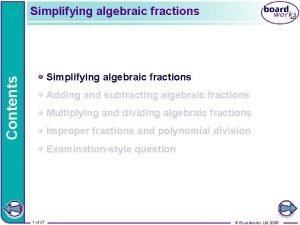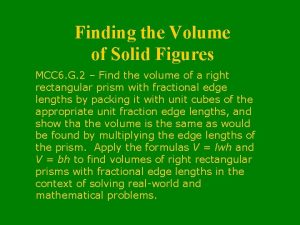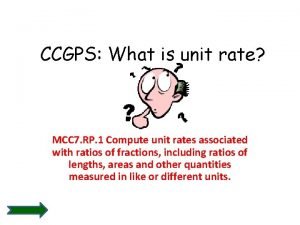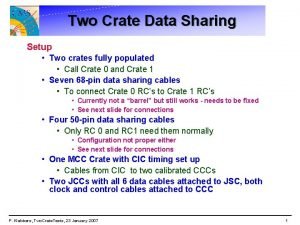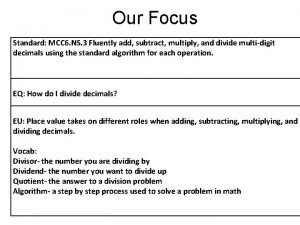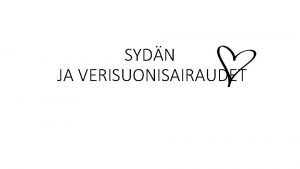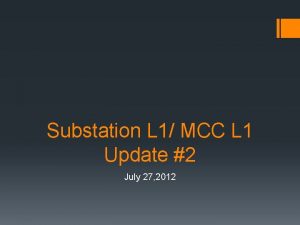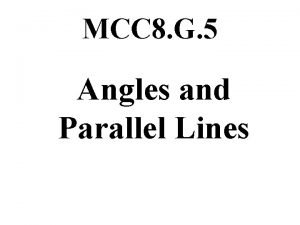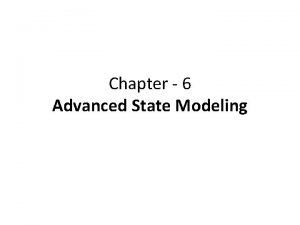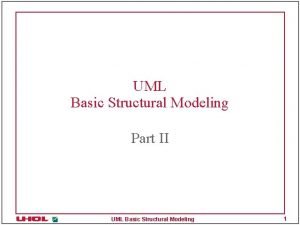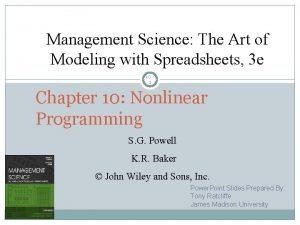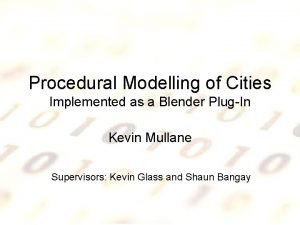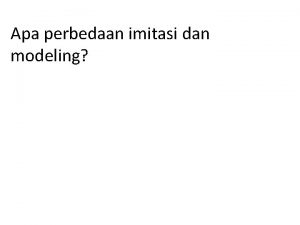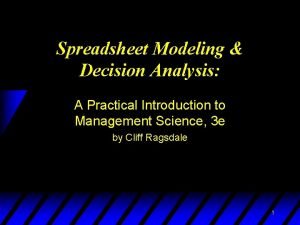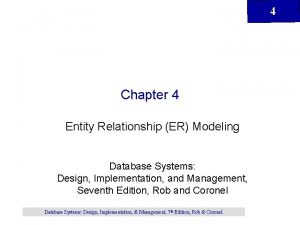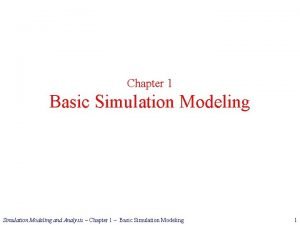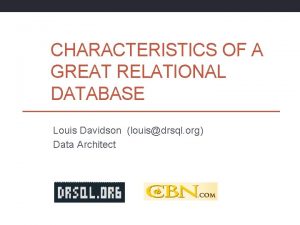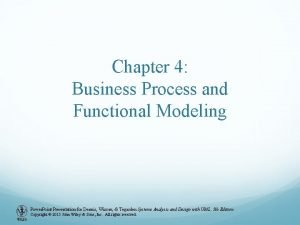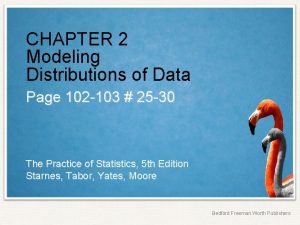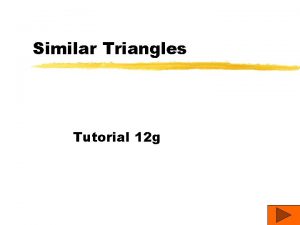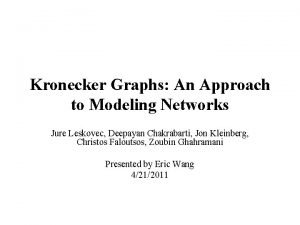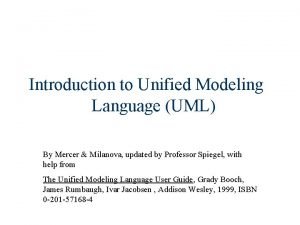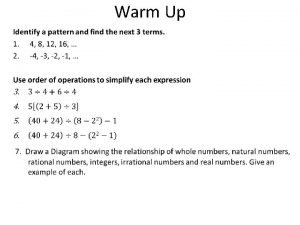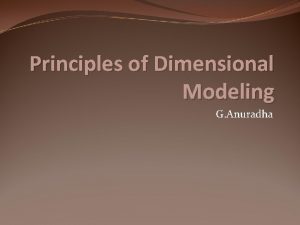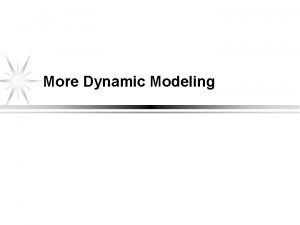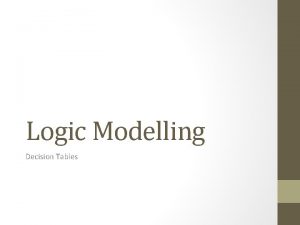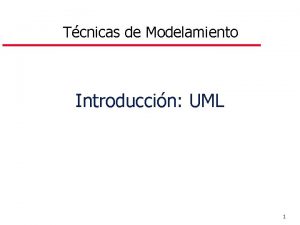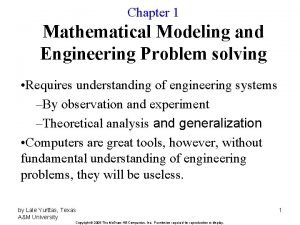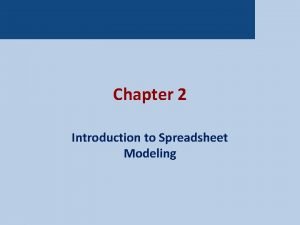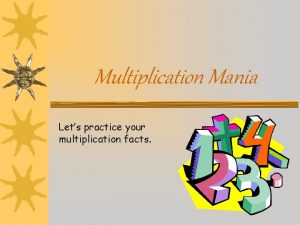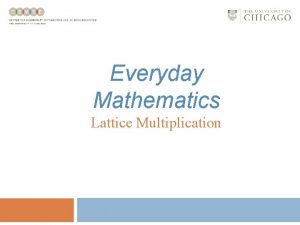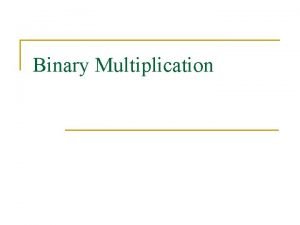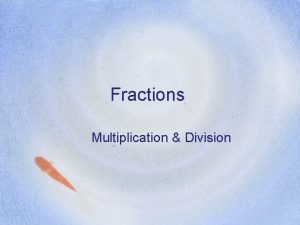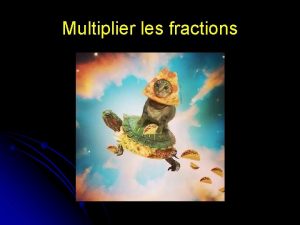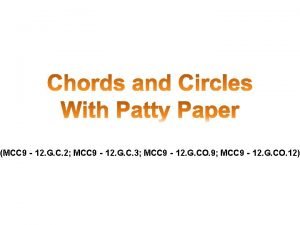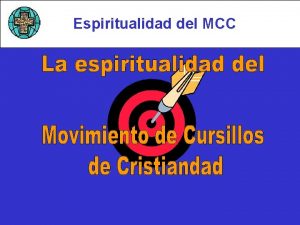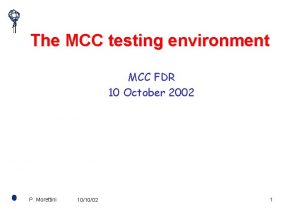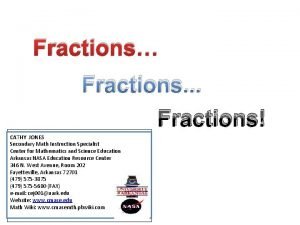Modeling Multiplication of Fractions MCC 4 NF 4

























































































- Slides: 89

Modeling Multiplication of Fractions MCC 4. NF. 4; MCC 5. NF. 5; MCC 5. NF. 6 Deanna Cross – Hutto Middle School

FRACTION BY A WHOLE NUMBER

Multiplying on a Number Line • Fraction by a WHOLE number Isabel had 8 feet of wrapping paper to wrap Christmas gifts with. She Used 3/4 of the paper. How much paper did she use? How much paper did she have left over? Suggestions on how to solve?

Number Lines Start and end with an arrow Divided into equal (equivalent) increments Can start and end at any number Are there any numbers that can be “renamed” or written as an equivalent fraction?

Isabel had 8 feet of wrapping paper to wrap Christmas gifts with. She Used 3/4 of the paper. How much paper did she use? How much paper did she have left over? • Isabel has used only ¾ of the paper. What if she had used ½ of the paper? How much would she have used? • You have to multiply 8 x ¾.

8 x¾ • First – Model what you have on a number line – “She had 8 feet of wrapping paper” 0 1 2 3 4 5 6 7 8 • Now, she is multiplying by ¾. What is the denominator?

8 x¾ • Now, divide the total amount (8) into 4 pieces. (8 ÷ 4 = 2 – so each piece is equal to 2) 0 1 2 3 4 5 6 7 • Shade in 3 of the four pieces. • Look to see if this lines up with a number on your number line. 8

Isabel had 8 feet of wrapping paper to wrap Christmas gifts with. She Used 3/4 of the paper. How much paper did she use? How much paper did she have left over? • So, 8 x ¾ = 6. • Why is the answer smaller than 8? • Because whenever you multiply a whole number by a fraction, you will get a smaller answer.

4 x½ • Will your answer be bigger or smaller than 4? • First – show 4 on the number line. 0 1 2 3 4

4 x½ • Now, look at your denominator – 2 • Divide your bar into two EQUAL pieces. 0 1 2 3 4 • Shade in 1 of the two pieces. • Does this line up with a number on the number line?

3 x • Will your answer be bigger or smaller than 3? • First – show 3 on the number line. 0 1 2 3 4

3 x • Now, look at your denominator – 3 • Divide your bar into three EQUAL pieces. 0 1 2 3 4 • Shade in 1 of the three pieces. • Does this line up with a number on the number line?

6 x • Will your answer be bigger or smaller than 6? • First – show 6 on the number line. 0 1 2 3 4 5 6

6 x • Now, look at your denominator – 4 • Divide your bar into four EQUAL pieces. HINT: Divide 6 by 4 and determine the decimal portion to divide this piece into 0 1 2 3 4 5 6 • Shade in 2 of the four pieces. • Does this line up with a number on the number line?

Practice • Optional Practice problems 1) 2) 3) 4) 5) 8 x 9 x 12 x 10 x 4 x

Multiplying with an AREA MODEL • Fraction by a WHOLE number Isabel had 8 feet of wrapping paper to wrap Christmas gifts with. She Used 3/4 of the paper. How much paper did she use? How much paper did she have left over?

Area models • Reminder of area – length x width = area • Area is the amount INSIDE a rectangular shape. • To determine area, you multiply TWO numbers – the length and the width.

Area models • Multiply the length and the width 2 5 • 2 x 5 = 10 – AREA = 10

Isabel had 8 feet of wrapping paper to wrap Christmas gifts with. She Used 3/4 of the paper. How much paper did she use? How much paper did she have left over? • Isabel has used only ¾ of the paper. • You have to multiply 8 x ¾. • Suggestions to solve using area model?

8 x¾ • Draw a rectangle. • Divide the rectangle into smaller rectangles to represent your WHOLE number. 8

8 x¾ • Next, along the vertical side, divide your rectangle into the number of pieces representing your denominator 4 4

8 x¾ • Now, shade in 3 rows of the 4 you just created. 8 4

8 x¾ • Hard part – This model started out with 8 wholes. How much would 1 box be worth? THINK… 8 4

8 x¾ • This is 1 whole… • So how much would 1 box be worth? • 1 box equals ¼ 8 4

8 x¾ • Now, count how many ¼’s you have shaded green. • 24 boxes = 8 4 • Can we leave like this, or is there another way to write this improper fraction?

8 x¾ • = 24 ÷ 4 = 6 • Proof: If you divided 8 dollars up among 4 people, how much would each get? 8 4

8 x¾ • = 24 ÷ 4 = 6 • Proof: If you divided 8 dollars up among 4 people, how much would each get? – TWO • Now, how much would 3 people get? – SIX • So, ¾ of 8 = 6

4 x½ • This is one you already know the answer to – if you have ½ of 4 you have 2. Let’s prove that with an area model.

4 x½ • First, draw a rectangle divided into your whole number – 4 4

4 x½ • Next, divide your rectangle into the number of pieces for your denominator along the vertical edge. 4 2

4 x½ • Shade in the number represented by the numerator… 4 2

4 x½ • Now THINK – how much is ONE square worth? What is your WHOLE? 4 2

4 x½ • One square = ½ • There are 4 “halves” – or 4 2

4 x½ • =4÷ 2=2 • So – if you have half of 4 you have 2. 4 2

3 x 1/3 • Try to draw this model on your own – you already know what 1/3 of 3 would be… 3 3

3 x 1/3 • Now, think about what each square represents… 3 So, each square = 1/3, there are 3 thirds… 3 3 x 1/3 = 1

• Draw the model. 6 4 6 x 2/4

6 x 2/4 • What does each square represent? 6 How many fourths? 12 4

Practice • Optional Practice problems 1) 2) 3) 4) 5) 8 x 6 x 12 x 5 x 4 x

Multiplying with TAPE DIAGRAM • Fraction by a WHOLE number Isabel had 8 feet of wrapping paper to wrap Christmas gifts with. She Used 3/4 of the paper. How much paper did she use? How much paper did she have left over?

Tape diagrams • Tape diagrams are like adding strips of paper together to determine lengths. For example, if I had 3 chocolate cupcakes and someone gave me 2 more, I would have five. 3 chocolate 2 more 5 chocolate cupcakes

Multiplying with Tape Diagrams • Fraction by Whole numbers are easy with tape diagrams…it is like repeated addition.

Isabel had 8 feet of wrapping paper to wrap Christmas gifts with. She Used 3/4 of the paper. How much paper did she use? How much paper did she have left over? • Isabel has used only ¾ of the paper. • You have to multiply 8 x ¾. • Suggestions to solve using tape diagram model?

8 x 3/4 • Think, how many 3/4 ths do you need? • 8 • Make a tape model to represent 3/4. Copy this eight times.

8 x 3/4 + + + + • Add up how many fourth’s you have… Can you leave the fraction as it is?

8 x 3/4 How do you change an improper fraction to a mixed number?

4 x½ • Draw a diagram to represent ½. • Repeat this 4 times.

4 x½ • Add up each piece… + + + Ahhh…there is a large number on top of a small number!

3 x 1/3 • Model • Add • Reduce + + How else can you write a number over itself?

6 x 2/4 • Model • Add • Reduce + + + Can you simplify this fraction?

Practice • Optional Practice problems 1) 2) 3) 4) 5) 12 x 9 x 5 x 6 x 4 x

Algorithm? • Now…let’s look at our practice problems and try to determine an algorithm to solve multiplication of a whole by a fraction. Is there a pattern? What is being done each time?

Algorithm ( ) x q = (a x q) ÷ b HUH? ? ? LETTERS? ? ? Each letter is a variable. It represents or takes the place of a number. Let’s look at an example of what these letters mean.

Algorithm ( ) x q = (a x q)÷b a = your numerator b = your denominator q = your whole number

Practice • Optional Practice problems 1) 2) 3) 4) 5) x 5 x 18 x 32 x 10 x 4

FRACTION BY A FRACTION

• of a class are boys. Of those boys, are wearing tennis shoes. What fraction shows how many boys are wearing tennis shoes? • Suggestions on how to solve this?

Multiplying on a Number Line • First, draw a line graph to represent the amount of boys (3/4). 0

Multiplying on a Number Line • Next, divide this bar into the denominator of the first fraction (3). Shade in the numerator (2). 0

Multiplying on a Number Line • Finally, see if this matches any of your points on the number line. Can 2/4 be written any other way? 0

Multiplying on a Number Line These are both even numbers, so the fraction can be reduced (or simplified) by dividing the numerator and denominator by 2.

• Model the second fraction (factor). 0

• Divide this amount into two equal sections (how can you divide 7 in half? ) 0 • When you divide 7 by 2, it does not produce an even number. Instead, you get 3. 5 - Model this amount (three sections and half of a section).

• This does NOT fall at an exact mark on the number line, which means more numbers must be added to the number line. 0 What could fall between 3/8 and 4/8? ? ?

0 We need a number half way in between these two fractions, which means we need two TIMES as many increments (or lines) on the number line. What is 2 x 8?

0 0 Let’s make equivalent fractions with 16 as a denominator by multiplying all by 2/2.

0 0 Now, what could fall between 6/16 and 8/16? 7/16

• Model the second fraction (factor). • Divide into 3 sections and shade 2. 0 • Check to see if this lines up with a number on the number line.

• Divide the numerator and denominator by 2. 0 Can this fraction be reduced (simplified) or written in any other way?

Practice • Optional Practice problems 1) 2) 3) 4) 5)

Multiplying with an AREA MODEL • Fraction by a Fraction • of a class are boys. Of those boys, are wearing tennis shoes. What fraction shows how many boys are wearing tennis shoes? • Suggestions on how to solve this using an area model?

• Draw a rectangular model showing horizontally.

• Next, model vertically.

• To determine your answer, count the boxes you shaded twice. – SIX

• Next, count the total number of boxes. – TWELVE

• So, your numerator = 6 • Your denominator = 12 Can you reduce or simplify this?

• Draw a rectangular model showing horizontally.

• Next, model vertically.

• To determine your answer, count the boxes you shaded twice. – SEVEN

• Next, count the total number of boxes. – SIXTEEN

• So, your numerator = 7 • Your denominator = 16 Can you reduce or simplify this?

• Draw a rectangular model showing horizontally.

• Next, model vertically.

• To determine your answer, count the boxes you shaded twice. – TWELVE

• Next, count the total number of boxes. – THIRTY

• So, your numerator = 12 • Your denominator = 30 Can you reduce or simplify this?

Algorithm? • Now…let’s look at our practice problems and try to determine an algorithm to solve multiplication of a whole by a fraction. Is there a pattern? What is being done each time?

Algorithm HUH? ? ? LETTERS? ? ? Each letter is a variable. It represents or takes the place of a number. Let’s look at an example of what these letters mean.

Algorithm a = your numerator of your first fraction b = your denominator of your first fraction c = your numerator of your second fraction d = your denominator of your second fraction
 Helen c. erickson nursing theory
Helen c. erickson nursing theory Dimensional modeling vs relational modeling
Dimensional modeling vs relational modeling Dividing decimals using models
Dividing decimals using models Area model multiplication fractions
Area model multiplication fractions Multiply algebraic fractions
Multiply algebraic fractions Fish method fractions
Fish method fractions Mcc coop
Mcc coop What the volume
What the volume Ihda mcc
Ihda mcc Tsahc mcc calculator
Tsahc mcc calculator Mcc today
Mcc today Ohfa mortgage tax credit
Ohfa mortgage tax credit Mcc 7
Mcc 7 Crate and barrel mcc
Crate and barrel mcc Conception
Conception Mcc ota program
Mcc ota program Mcc
Mcc 6.ns.3
6.ns.3 Nebraska paralegal association
Nebraska paralegal association Koronaariangiografia
Koronaariangiografia Mcc substation
Mcc substation What is m 4 if m 6 78
What is m 4 if m 6 78 The exchange mcc
The exchange mcc Jwst mcc-1a
Jwst mcc-1a Calhfa mcc
Calhfa mcc Mcc moodle
Mcc moodle Cristo cuenta contigo de colores
Cristo cuenta contigo de colores Manufacturing systems modeling and analysis
Manufacturing systems modeling and analysis Numerical modeling
Numerical modeling Structural equation modeling
Structural equation modeling Dimensional modeling basics
Dimensional modeling basics Active region of mosfet
Active region of mosfet Data vault pit table example
Data vault pit table example What is nested state diagram
What is nested state diagram Reliability modeling
Reliability modeling Basic structural modeling
Basic structural modeling Lithium halflife
Lithium halflife Q letter is used in spice vlsi
Q letter is used in spice vlsi Management science the art of modeling with spreadsheets
Management science the art of modeling with spreadsheets Growth curve modeling spss
Growth curve modeling spss Example of intertextuality
Example of intertextuality Traffic modeling software
Traffic modeling software Agile modeling and prototyping
Agile modeling and prototyping Performance modeling
Performance modeling Modeling distributions of data
Modeling distributions of data Blender procedural generation
Blender procedural generation Multiscale modeling
Multiscale modeling Perbedaan imitasi dan modeling
Perbedaan imitasi dan modeling Pipeline risk modeling
Pipeline risk modeling Cliff ragsdale spreadsheet modeling solutions
Cliff ragsdale spreadsheet modeling solutions Bridge entity erd
Bridge entity erd System modeling in software engineering
System modeling in software engineering Biomedical modeling and simulation
Biomedical modeling and simulation Nature of simulation
Nature of simulation Business modeling
Business modeling Pengertian unified modeling language
Pengertian unified modeling language Tbone codd
Tbone codd Advanced part modeling
Advanced part modeling Business process and functional modeling
Business process and functional modeling Chapter 2 modeling distributions of data
Chapter 2 modeling distributions of data Modeling data in the organization
Modeling data in the organization Lesson 12 modeling using similarity
Lesson 12 modeling using similarity Kronecker graph
Kronecker graph Eznec free download
Eznec free download Data flow modeling in verilog
Data flow modeling in verilog Hierarchical modeling in computer graphics
Hierarchical modeling in computer graphics Annual exceedance probability vs return period
Annual exceedance probability vs return period Mercer oneview login
Mercer oneview login Algebraic expressions model
Algebraic expressions model Health care risk adjustment and predictive modeling
Health care risk adjustment and predictive modeling Data modeling best practices for data warehousing
Data modeling best practices for data warehousing Algebra bootcamp answers
Algebra bootcamp answers Disrac
Disrac Southern california science olympiad
Southern california science olympiad Input domain modeling
Input domain modeling Aris process modeling
Aris process modeling Additive and subtractive modeling
Additive and subtractive modeling Principles of dimensional modeling
Principles of dimensional modeling Modeling
Modeling Modeling logic with decision tables
Modeling logic with decision tables Modeling relational data with graph convolutional networks
Modeling relational data with graph convolutional networks Modeling of digital communication systems using simulink
Modeling of digital communication systems using simulink Vhdl code for combinational circuits
Vhdl code for combinational circuits Uml adalah
Uml adalah Hlm hierarchical linear modeling
Hlm hierarchical linear modeling Modeling of digital communication systems using simulink
Modeling of digital communication systems using simulink Rf propagation modeling software
Rf propagation modeling software Describe data and process modeling concepts and tools
Describe data and process modeling concepts and tools Mathematical modeling and engineering problem solving
Mathematical modeling and engineering problem solving Introduction to spreadsheets and models
Introduction to spreadsheets and models


